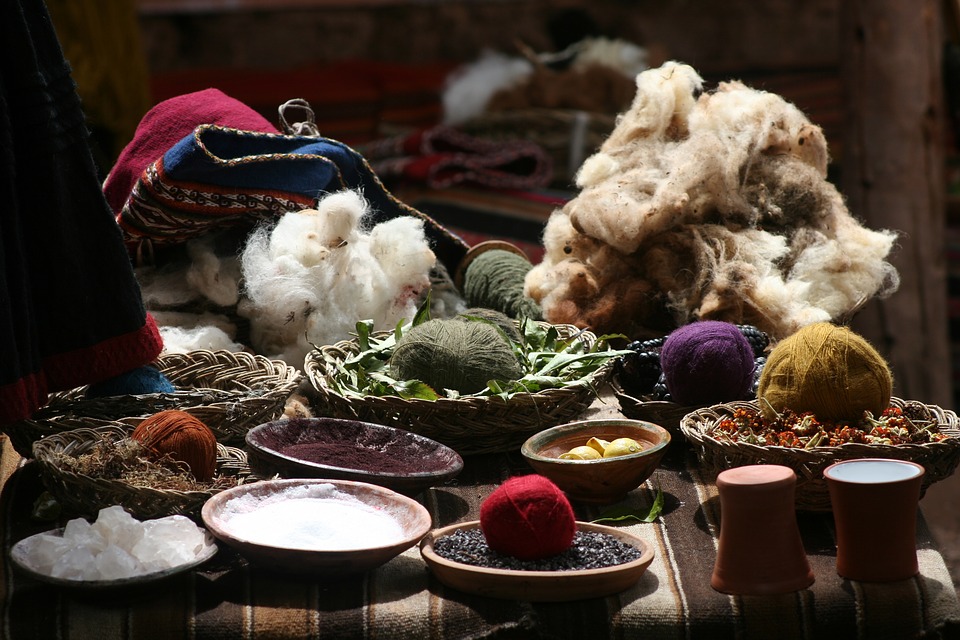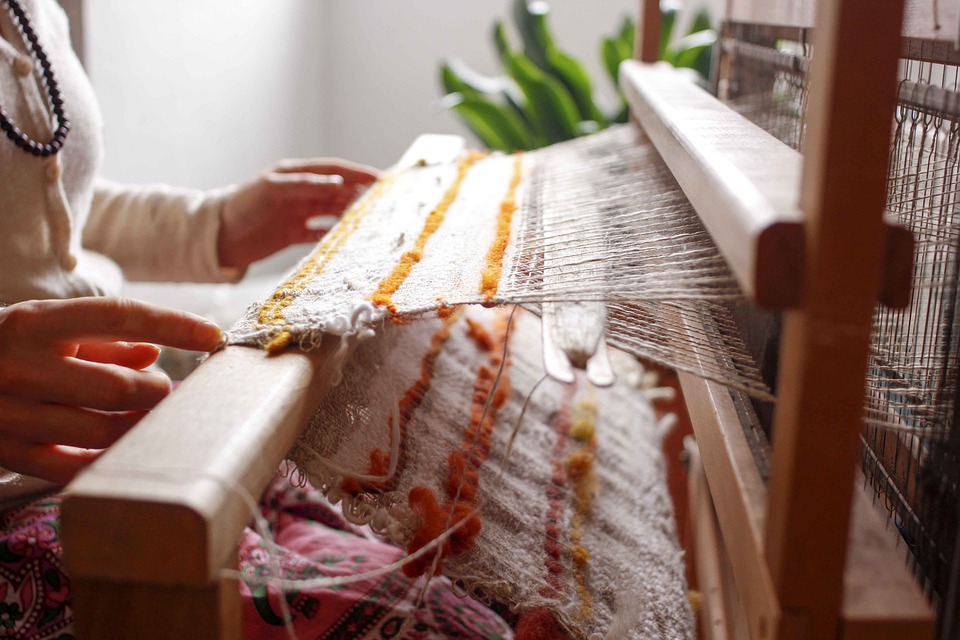Making a Beni Ourain Rug – Moroccan Rug
How are authentic Beni Ourain rugs produced?
This process of creating a Moroccan Beni Ourain Rug begins by procuring high-quality wool. The producers bring in special sheep from the Moroccan mountains. These sheep are then sheered to obtain their wool. Once done, this wool has to be cleaned & scoured as it contains several natural oils.
Manual Hand spinning of this sheep wool
spinning of this sheep wool
This wool is manually handspun after that. The wool is transformed via this spinning method as it twists wool fibers together to make yarn. This wool is then spun into several threads, which are ideal for weaving. The warp and loom are prepared this way. Whenever you purchase a Berber rug, you never have to worry about its quality, as all of them are made using 100% natural wool sourced directly from premium sheep.

Knotting the Moroccan rugs
Knotting is the next stage of this rug manufacturing process. The craftspeople’s skills are crucial at this stage. The Moroccan rugs undergo weaving with little wefts between their knots. Why is that done? So that the end product has a dense composition.

Dyeing & trimming
Before this Beni Ourain rug becomes complete, various patterns are dyed using natural dyes. It’s then cut away from the loom for trimming, where special scissors are used to carry out this purpose. It ensures that there is uniformity of size in a pile.

The last steps
It takes several months for the knotting process to be finished, during which time the original material is likely to get dirty. As it’s attached to a loom, it may also get hard. That’s why Moroccan rugs are given a thorough washing & drying every once in a while. Washing is done at least two to three times to ensure its softness. Every Berber rug is dried in natural sunlight before it is sent for sale.

The complete manufacturing of a Beni Ourain rug is an intricate process.
All Berber rugs take an enormous amount of time and effort before they are completed. Every rug requires multiple weavers to work on it for many days. As the weeks go by, artisans have to keep threading the wool and tie up individual knots. As a result, the final product looks gorgeous and stunning, which is why it is so popular in the West.

This is a heritage that’s been developed over the centuries
A handwoven Beni Ourain rug requires a ton of skill and effort. The knowledge for weaving one is only passed along among the female members of the family. As a result, there are many outstanding design elements, which may reflect the real life of the weaver herself. Themes like birth, religious beliefs, rural life, femininity, nature, and fertility are often portrayed on these rugs. A few people consider them effective safeguards against evil forces, which is why lucky charms and other tribe ceremony symbols are also woven into the design.
Dark brown and natural ivory shades
Most Berber rugs tend to be woven by using natural ivory-colored sheep wool. This refers to the wool which covers the entire body of the sheep. While it may seem black at first glance, it’s a brownish color, albeit an extremely dark one. This deep brown wool happens to be sourced directly from the head of the sheep. Beni Ourain rugs happen to command a high degree of respect and prestige throughout Morocco. They are made using only the finest materials available on Earth, which is a great pride.


